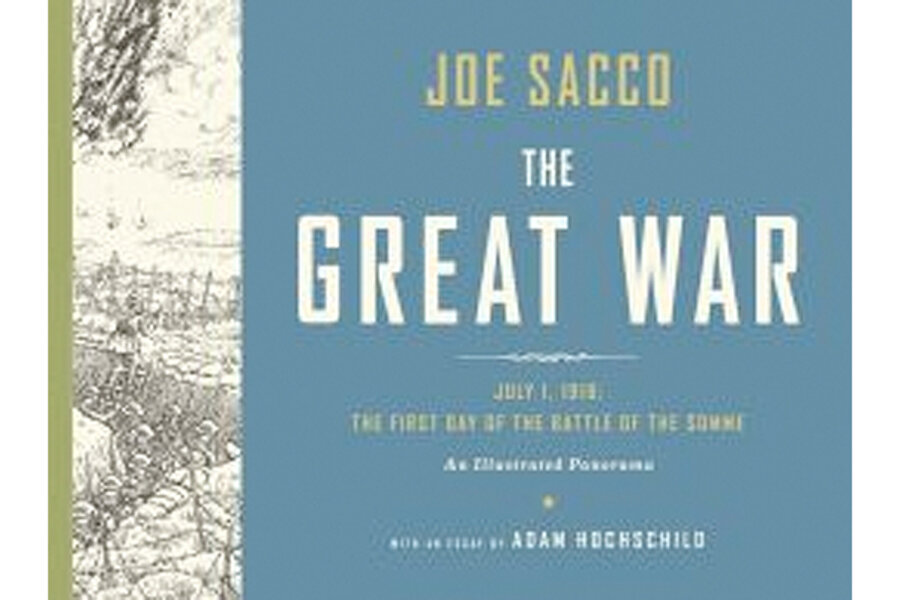The Great War
Loading...
For more than a century, the Battle of the Somme has been a metaphor for the savagery and horrors of trench warfare in World War I. Military historians commonly use words like “holocaust,” “catastrophe,” and “massacre” to describe it.
The battle lasted 141 days – from July 1 to November 18, 1916. The strategy behind the British and French offensive was simple: a massive artillery bombardment would destroy the barbed wire defenses and decimate the German trenches. Once the British and French ground troops secured the front lines, Allied cavalry were to rush through and break open the stalemate on the Western front.
Nothing worked as planned. The bombardment was certainly massive – there was one artillery piece for every 18 feet of the front lines and they fired 1.5 million shells. But the barbed wire was not damaged, which slowed the Allied advance and the deeply-dug-in German soldiers were largely unaffected by the artillery fire. Armed with machine guns, the defenders slaughtered the slow-moving Allied troops as they slogged through no-man’s land.
But what we remember today is the number of casualties. Of the 120,000 British troops who went into battle on July 1, 57,000 were dead or wounded before the day was over. More than half of the casualties occurred in the first hour. Before the fighting stopped, roughly 1.2 million British, French, and German troops were dead or wounded. The exact toll will never be known.
The central challenge for anyone who describes this event has always been to document the sheer size and scope of the battle as well the human cost that it entailed. In The Great War, artist Joe Sacco, who has already distinguished himself for his ability to depict military conflicts in pen-and-ink drawings, has tackled this problem through a 24-foot-long panoramic drawing.
This isn’t a map or a picture of a precise moment in the day. Rather, it is an incremental narrative that attempts to depict what happened on (and shortly before) that horrific day. It begins with General Douglas Haig, the British commander in chief, walking in the garden of his chateau and ends at a casualty clearing station where the dead are being buried in mass graves. In between, we see supplies being brought up; heavy guns wheeled into place and the artillery barrage; the British troops eating breakfast and drinking a rum ration before the attack and then walking (yes, they had been ordered to walk) across no-man’s land and directly into the German machine guns: the dead and wounded falling, stretcher bearers returning with the casualties to the overwhelmed field hospitals.
The crowded panorama is engrossing and the drawings are tight and carefully rendered. The detail is amazing – Sacco depicts trains, trucks, and horse-drawn wagons bringing up supplies; soldiers smoking, eating, urinating and defecating, going over the top and into no-man’s land; and falling where they were hit. Severed body parts are strewn about the battlefield. The numbers of soldiers appears to be countless. Readers will find themselves repeatedly revisiting scenes to uncover details that they may have missed before.
One disquieting feature is that almost all of the soldiers are faceless, a quiet commentary, perhaps, on the shameful disregard of human life demonstrated by the British General Staff throughout the engagement.
There is no text on the drawing itself. An accompanying booklet contains a short essay on the battle drawn from Adam Hochschild’s "To End All Wars" that is very useful. In addition, it offers Sacco’s own annotation for each of the scenes. His comments are often brief and powerful: “If they survive, most of the wounded in no-man’s land will not be collected until nightfall” and “The dead are thrown over the side of the trenches to be dealt with later.”
Sacco’s complex drawing is absorbing, haunting, powerful, and moving. Most who see this work will want to learn more about this landmark battle. And all who see it will be moved by senseless slaughter that was so sadly commonplace in World War I.
Terry Hartle is senior vice president of government relations for the American Council on Education.








